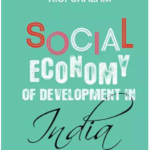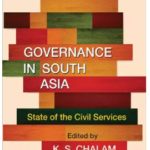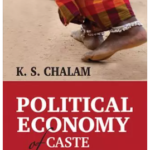The apex court of India has been under fire for all the genuine reasons for quite some time. There seem to be internal differentiation and discord within the brotherhood of the bench and is seen brimming occasionally. The English traditions and not necessarily the morality have been adopted by the Judiciary ever since ‘Mayor’s Courts’ and Macaulay. After independence, a Constituent Assembly was formed to draft the Constitution for the independent nation. One can find that most of the members of the drafting committee including Dr B.R.Ambedkar were drawn from the legal profession to give their mind and soul for a judicious, fair and reasonably pragmatic document to guide the destiny of the nation. It is boasted that the doctrine of separation of powers, a theoretical model based on Roman, British and the American traditions was adopted for India. However, the allegation that the legal minds and fraternity who contributed in the drafting of the Constitution were a little inclined to provide supremacy to judiciary stands. It can be noticed in the form of exhaustive clauses and articles relating to judiciary including the salary and perks along with the third schedule describing its details, while such advantage is deprived of the other Constitutional authorities. They are meticulous. In fact the provisions in terms of number of articles are almost the same for Parliament and Judiciary (43 -41). This is anticipated as the learned Judges under whose shoulders the providence of the underprivileged, the deprived and the marginalised is placed, expected to entail them with their wisdom. Yet, by default or design the framers did not infuse democratic spirit in to the processes of judicial decisions that might have triggered present crisis. In fact the first generation of legal minds after independence due to their commitment to fair play have collectively lived up to the expectations till 1970s. Decadence started as per late Justice Shivasankar, former Law Minister Government of India, with the Kesavananda Bharati case. He said that, “ Mathadipathis like Kesavananda and Zamindars like Gorak Nath evoked a sympathetic cord nowhere in the whole country except in the Supreme Court of India. And the bank magnates, the representatives of the elitist culture of this country, ably supported by industrialists, the beneficiaries of independence, got higher compensation by the intervention of the Supreme Court in Cooper case. Antisocial elements, i.e., FERA violators, bride burners and a whole lot of reactionaries have found their haven in the Supreme Court”. (Cited by Jaivir Singh, JNU). The contempt case filed against him for saying this was later withdrawn. If we look at the current issues vanquishing the judiciary, Justice Shivasankar’s prognosticated finding seem to be relevant now for an academic discussion.
The judgement in the case of Criminal Appeal No 416 of 2018 delivered on 20th March by Justice Adarsh Kumar Goel and Justice Uday Umesh Lalit can be taken for an academic detour. The guiding spirit or principle of Indian Constitution is justice- social, economic and political. Notwithstanding the 42nd amendment to the Constitution, Sri Shivasankar’s interpretation and action as Minister for Law and Justice, the judiciary is made fragile by the learned judges themselves through their interpretations and personal opinions expressed as judgments with least regard for the so called Constitutional morality or spirit particularly with respect to justice as Fairness. John Rawls and Amartya Sen have elaborated on the theory and Idea of justice particularly with reference to Caste based Iniquitous society. It seems the Niti- Nyaya dichotomy and its application to India has not touched the conscience of our learned judges. There is a general feeling among the academic fraternity of Legal Education and Governance that the amount of time and resources used by some learned judges on important issues like, privatisation of public sector units, Caste based reservations, SC ST Atrocity cases etc. that affect large sections of society are inadequate. It is often seen that the popular beliefs of the elite of the society (to use a popular phrase of the Court ‘creamy layer’ of minority) are carried in to the Court rooms rather than reflecting on the efficacy, prudence and the needs of an evolving society with empathy. Sometimes they are cold-hearted and matter of fact orders disposing of the cases with impunity. Let us look at the case of Sri Bhaskar Karbhari Gaidwad an Employee of the College of Pharmacy, Karad, Maharashtra, the respondent NO 2 of case on PoA Act 1989 and how it is interpreted in the above order of learned judges.
The above judgement contains 89 pages consisting of 2401 lines, out of which 1620 lines are citations as precedents from 65 cases. It means nearly 68 per cent of the judgement is lifted or borrowed from previous proceedings. If the wisdom of the amicus Sri Amarendra Sharan and other mentions are also included, it comes to three fourth of the written order, leave alone their relevance and verisimilitude. The conclusion part of it includes the warning in Para 83 that, “any violation of direction (iii) and (iv) will be actionable by way of disciplinary action as well as contempt.” Direction III above is about arrest of public servant with the approval of appointing authority, and IV is preliminary enquiry to be conducted by a DSP to find allegations are not frivolous or motivated under Atrocities Act. As the Constitution under Art 141 conferred that Law declared by Supreme Court to be binding on all courts, it becomes operational with prospective affect making the essence of 1989 PoA Act infructuous. The Scheduled castes of North India who have been subjected to several heinous crimes intensely and continuously for the last few years found the judgement adding fuel to fire. It is common knowledge of every literate person how the atrocities on the dalits are perpetuated near Delhi but unfortunately did not reach the portals of the Supreme Court which otherwise very proactive. The interesting part of the judgement is that the learned judges cited Article 21 to substantiate their reasoning. “In the present context, to balance the right of liberty of the accused guaranteed under Article 21, which could be taken away only by just fair and reasonable procedure and to check abuse of power by police and injustice to a citizen, exercise of right of arrest was required to be suitably regulated by way of guidelines by this Court under Article 32 read with Article 141 of the Constitution. Some filters were required to be incorporated to meet the mandate of Articles 14 and 21 to strengthen the rule of law.” It is further noted that, “thus, unless this Court laid down appropriate guidelines, there will be no protection available against arbitrary arrests or false implications in violation of Article 21 of the Constitution.” We have checked the sentence twice before citing it here as we knew about Article 22 that deals with, “Protection against arrest and detention in certain cases” and not necessarily Art 21 ‘protection of life and liberty’ that requires procedure established by law. In this case Art 22 seem to be relevant and not that of 21. In fact Art 21 should have been used to protect the dalit victims. In fact the learned Judges have totally ignored Article 17, abolition of untouchability, the basis on which PoA has evolved over a period of time . We may give benefit of doubt to learned judges as they were under moral pressure to protect an ignorant officer Dr Mahajan, the appellant a non-scheduled caste person who refused permission to file charge sheet against two non-scheduled caste officers who were alleged to be responsible for committing the atrocity on Sri B.K Gaidwad the complainant. This case appears to be simple but trivial. In the whole judgment of 89 pages there appears to be over dependency on the submissions of the deponent and his counsel along with the amicus’s comparative table of the provisions of the Act and their application here. The amicus is supposed to be an expert in the area of the subject given to him, but the analytical aspects in relation to the constitutional morality and its impact on the future of the society are solely that of the judges who pass the orders.
It is noticed in some of the judgments that the honourable judges , may be due to heavy work and pressure rely on the so called precedents, cite passages from different sources verbatim to fill not less than 100 pages in each case. The conclusion and the operation part contain few sentences and sometimes there appears to be lot of confusion as to which part is analysis and which part is direction. In a lighter vein we can say that without which there will be less business for the legal professionals. However, we need to understand that the scrutiny of facts and material on record considered by a judge to deliver the judgment should contain reasonable , just and rational account that correspond to the details of the case based on submissions made. It should not appear to be a prejudged dispute more so when it is a constitutional matter. The learned Judge of our apex court is not a technocrat to achieve Pareto optimality where, ‘goods are allocated in such a way that it is impossible to redistribute them so that at least one person is better off and nobody is worse off.’ Even the fallacy of this theorem that is cited quite often by a section of the elite who argue for efficiency was exposed by Nobel Laureate Amartya Sen. He revealed that, ‘a society in which some people lead lives of great luxury while others live in acute misery can still be Pareto optimal if the agony of the deprived cannot be reduced without cutting into the ecstasy of the affluent. He adds that a state can be Pareto optimal and still be sickeningly iniquitous.’ It is cited here in the context of a section of the judiciary defending the clause of equality before law in a structurally iniquitous society and tries to preserve social division on grounds of technical efficiency, even if it is against the basic spirit of the Constitution. There can be some legal matters where software can be used to decide the matter purely on the facts of the case. But, here is a constitutional matter with enormous social implications essentially involves the competence, capacity and candour of the person who delivers the judgement.
Para 41 in the above judgment speaks about law spreading casteism and cited not only Art 14-16 but also referred to Dr B.R Ambedkar to substantiate their reasoning, may be a false or coarse logic to ignore Art 17 and 22 and rely on their chosen precedents and articles. In paragraph 72 the learned judges asserted that “harassment of an innocent citizen, irrespective of caste or religion, is against the guarantee of the Constitution. This Court must enforce such a guarantee. Law should not result in caste hatred.” There is no dispute with this ideal. But the way in which data are interpreted and situations cited to illustrate an erroneous point is perhaps bad in Law. It is noted in several publications of legal luminaries that ‘precedent’ or principle of stare decisis needs to be used cautiously and infrequently to achieve the objectives of predictability, stability, fairness and efficiency and not to avoid the challenge of delivery of justice. The distinction between two categories of horizontal and vertical precedents, the former adhering to its own precedent and the latter derived from a higher court are hardly observed in some of the judgments. The citation of case law and the mushrooming of legal consulting firms and professionals made the job of a Judge easier compared to her predecessors who did not get the support of computer assisted documentation. Yet, the present generation of judges have problems of plagiarism as the legal support system, if incapable and dubious might throw him in to a cauldron of copying ideas, paragraphs that might end up in a condition of fallaciously reasoned, inadequately considered and badly argued judgment. That is not good either for the judiciary or for the clients and even for a progressive nation. In the academic world authors and scholars were penalised for copying others’ studies either inadvertently or intentionally without giving credits to the original author in a thesis or research paper. They are dubbed as plagiarists and frauds due to the rules of the game. We hardly come across such issues in the judiciary where similarly placed judges citing each other. If an analysis is made to correlate the socio-economic and ideological background of each judge and the content of judgments passed following a linear path resulting in regression in society, what does it signify? Marxists simply dismiss judiciary as a part of super structure protecting the ruling class may not help us to understand the process of class suppression even in seats of justice delivery?
In fact the powers and functions prescribed for the Supreme Court are not absolute as it is repeatedly noted “unless parliament by law otherwise provides”. There seem to be no headway in the present SC ST atrocity judgment like all other previous cases relating to the socially and educationally marginalised. Why should the Parliament go to sessions every time and bring an amendment to suit the whims of select judges? It is necessary to understand to what extent the judgments are advisory and orders are binding? The Indian judiciary is not democratised while enjoying all the benefits of Parliamentary Democracy and not even remotely mentioning about Art 312 and made the Parliament to lick its wounds in the appointment of judges. How is it possible? There may be an implicit agreement between the benches of the judiciary and parliament on all important issues relating to the economic and social development of the country to subvert the ideals of the founding fathers of the nation while pretending to do justice. Are the birds of the same feather flocking together?



